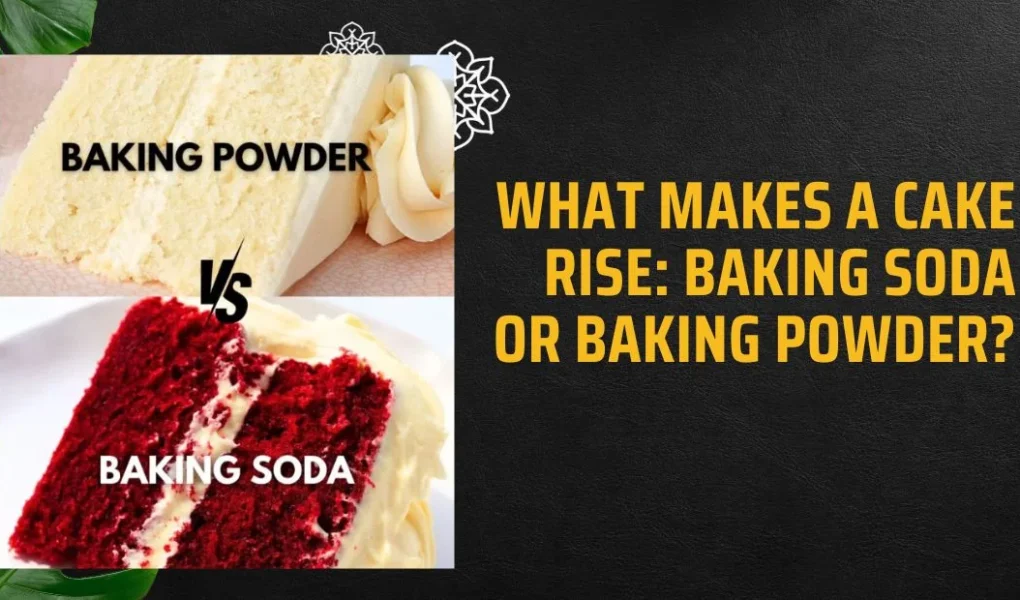When it comes to baking a delicious cake, achieving that perfect rise is essential for a light and fluffy texture. The secret behind this lies in the leavening agents: baking soda and baking powder. But what exactly are they, and how do they work?
Ingredients:
- Baking Soda: Also known as sodium bicarbonate, baking soda is a pure chemical compound that requires an acidic ingredient to activate its leavening properties. This can be buttermilk, yogurt, lemon juice, or vinegar. When baking soda reacts with an acid, it produces carbon dioxide gas. This gas gets trapped in the batter, causing it to expand and rise during baking.
- Baking Powder: Unlike baking soda, baking powder is a combination of sodium bicarbonate and an acidic ingredient (usually cream of tartar) along with a dry acid like cornstarch. This means it can activate on its own when exposed to moisture and heat. Baking powder is often used in recipes that don’t already contain acidic ingredients.

Step-By-Step Instructions:
- Understanding the Role:
- Baking soda requires an acidic component in the recipe to work effectively. It reacts quickly once mixed with an acid, so the batter needs to be baked immediately.
- Baking powder, on the other hand, contains both an acid and a base and can be used in recipes without acidic ingredients. It typically reacts in two stages: first when mixed with liquids and secondly when exposed to heat.
- Using Baking Soda:
- Measure the required amount of baking soda according to your recipe.
- Ensure there’s an acidic ingredient like buttermilk or yogurt in your batter to activate the baking soda.
- Mix well and bake immediately to ensure the gas produced doesn’t escape before baking.
- Using Baking Powder:
- Measure the specified amount of baking powder as per your recipe.
- Baking powder already contains its own acid, so it activates with moisture and heat.
- Mix into your batter or dough and bake as directed in your recipe.
- what makes a cake rise baking soda or baking powder
Directions:
- For Cakes Using Baking Soda:
- Preheat your oven to the temperature specified in your recipe.
- Combine dry ingredients including baking soda.
- In a separate bowl, mix wet ingredients containing an acidic component.
- Combine wet and dry ingredients just before baking to ensure the reaction is fresh.
- Bake immediately to achieve maximum rise.
- For Cakes Using Baking Powder:
- Preheat your oven to the temperature stated in your recipe.
- Mix baking powder into your dry ingredients.
- Combine with liquid ingredients and mix well.
- Bake according to the recipe instructions to allow for the dual-stage activation of baking powder.
Nutrition Facts:
- Baking soda and baking powder are used in small quantities in recipes, contributing negligible calories or nutrients to the final baked product. Their primary role is in leavening rather than nutrition.
Reviews:
- Bakers often appreciate the reliability and versatility of both baking soda and baking powder in achieving consistent rises in their cakes. The choice between them depends on the recipe’s requirements for acidity and desired texture.

Community Tips and Praise:
- Tip: Store baking soda and baking powder in cool, dry places away from moisture to maintain their effectiveness.
- Praise: Baking soda and baking powder are essential pantry staples for home bakers, ensuring cakes rise evenly and maintain a light, airy texture.
- what makes a cake rise baking soda or baking powder
In conclusion, whether you use baking soda or baking powder depends largely on the acidity of your ingredients and the desired texture of your cake. Baking soda requires an acidic component to activate its leavening properties, while baking powder contains its own acid and can activate with moisture and heat alone. By understanding these differences and following your recipe carefully, you can achieve perfectly risen cakes every time.




